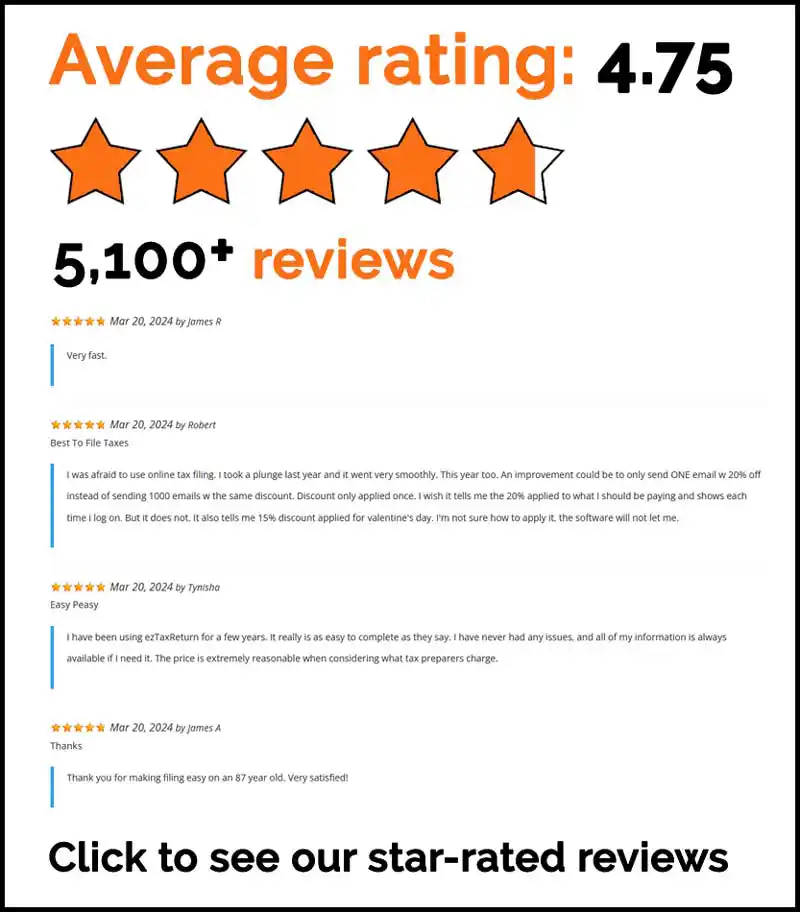The information in this article is up to date for tax year 2024 (returns filed in 2025).
Are home improvement loans tax deductible? Well, it kind of depends. If your home improvement loan is secured by your home, such as with a home equity loan or a HELOC, the interest might be tax-deductible, provided it’s used for big home improvements. However, unsecured personal loans typically don’t offer this benefit. Find out which loans qualify for tax deductions, the types of home improvements that are eligible, and how to claim these deductions.
Key Takeaways
- Home improvement loans, like home equity loans and HELOCs, can provide tax deductions on interest paid if the funds are used for significant renovations.
- Unsecured loans, such as personal loans, do not qualify for tax benefits, making secured loans the better choice for home improvements.
- Eligible improvements must enhance home value or extend its life; proper documentation is essential to claim any tax deductions on these expenses.
What Are Home Improvement Loans?
Home improvement loans are specialized loans designed to fund home improvement projects. These loans can be used for a variety of purposes, including:
- Renovating a kitchen
- Adding a new room
- Repairing a roof
- Updating plumbing or electrical systems
- Enhancing energy efficiency
There are several types of home improvement loans available, each with its own set of features and benefits.
One of the most common types of home improvement loans is the home equity loan. These loans allow you to borrow a lump sum against the equity you have built up in your home. Home equity loans come with a fixed interest rate and repayment terms that can extend up to 30 years, making them a popular choice for large-scale projects.
Home equity lines of credit (HELOCs) are another popular option. Unlike home equity loans, HELOCs offer flexible access to funds with variable interest rates. This means you can borrow what you need, when you need it, up to a certain limit. HELOCs can be particularly useful for ongoing projects where the total cost is uncertain.
In addition to these, there are also FHA 203(k) loans specifically designed for renovation projects. These loans allow you to finance both the purchase of a home and the cost of its renovation with a single mortgage.
Before taking out any home improvement loan, assess your finances and aim for the lowest interest rate available.
Tax Deductible Home Improvement Loans
The key factor that determines whether the interest on your loan is tax-deductible is whether the loan is secured by your home. Secured loans, such as home equity loans and HELOCs, allow you to deduct the interest paid, provided the funds are used for significant home improvements.
Unsecured loans, on the other hand, do not offer the same tax benefits. Loans that are not secured by your home, such as personal loans, do not qualify for mortgage interest deductions. This means if you take out a personal loan for home improvements, you won’t be able to deduct the interest on your taxes.
To maximize your tax benefits, use secured loans for your home improvement projects. This allows you to take advantage of potential tax deductions and save money in the long run.
Secured vs. Unsecured Loans
Secured loans, such as home equity loans and HELOCs, use your home as collateral. Because these loans are backed by your home, the interest you pay on them can be tax-deductible if the funds are used for significant renovations.
Unsecured loans, including personal loans, do not require collateral. As a result, they typically do not qualify for any mortgage interest deductions. This makes them less advantageous from a tax perspective compared to secured loans.
In essence, the main difference lies in the collateral backing. Secured loans can offer tax benefits due to their collateral, while unsecured loans cannot. Understanding this distinction can help you make more informed decisions about which type of loan to use for your home improvement projects.
Home Equity Loans
Home equity loans allow you to borrow against the equity you’ve built in your home, providing a lump sum of money with a fixed interest rate. One of the significant advantages of home equity loans is their potential for tax deductibility. If the loan is used for buying, constructing, or significantly renovating your home, the interest you pay on a home equity loan can be tax-deductible.
To qualify for these tax deductions, the home equity loan must be used for specific purposes. The IRS permits deductions on interest paid for loans. These loans must be used to buy, build, or significantly improve the home that secures them. This means you can’t deduct the interest if you use the loan for non-home-related expenses.
The tax deductions are substantial, allowing taxpayers to deduct interest on up to $750,000 of mortgage debt if the funds are used for qualifying home improvements. For married couples filing separately, the limit is $375,000. This can translate into significant tax savings, making home equity loans an attractive option for financing home improvements.
Keep detailed records of how the funds from your home equity loan are used. This documentation is necessary when claiming your interest deductions and ensuring compliance with IRS regulations.
Home Equity Lines of Credit (HELOCs)
A Home Equity Line of Credit (HELOC) is a revolving line of credit that allows homeowners to borrow against their home’s equity as needed. One of the key benefits of a HELOC is its flexibility; you can withdraw funds as necessary, which is ideal for ongoing or phased home improvement projects.
The interest on a HELOC can be tax-deductible, but this is contingent on how the funds are used. The Tax Cuts and Jobs Act restricted the deductibility of HELOC interest to situations where the loan is used for substantial improvements to the property securing the loan. This means that if you use a HELOC for non-home-related expenses, you won’t be able to deduct the interest.
HELOCs offer significant financial flexibility, making them a popular choice for homeowners looking to finance large-scale home improvement projects. The ability to draw funds as needed can help manage costs more effectively and ensure you only borrow what is necessary.
As with home equity loans, keep detailed records of how you use the funds from a HELOC. This documentation is necessary when claiming your interest deductions and demonstrating compliance with tax regulations.
What Home Improvements Qualify for Tax Deductions
Not all home improvement projects are created equal in the eyes of the IRS. To qualify for tax deductions, the projects must meet specific criteria set by the IRS. Generally, major improvements that enhance the value or extend the life of the property are considered eligible for tax deductions. Examples of qualifying improvements include new roofs, furnaces, upgraded kitchens, and substantial renovations that buy build or substantially improve the home’s value or adapt it to new uses. These capital improvements can significantly impact your property’s value and longevity, making them eligible for tax deductible home improvements.
Differentiate between home repairs and home renovations. Routine maintenance and minor repairs are not deductible, whereas substantial renovations that add value or extend the home’s life can be. Keep detailed receipts and documentation of all improvements to claim these deductions.
Accurate records, such as receipts for materials, labor, contractor contracts, and closing documents, will support your claims for tax deductions. Proper documentation ensures you can prove the use of funds for eligible home improvement projects. Start your tax filing journey with ezTaxReturn today!
Medical-Related Home Renovations
Home renovations for medical purposes can also qualify for tax deductions, provided they meet certain criteria. Medically necessary alterations, such as wheelchair access, are considered deductible as medical expenses. These improvements must primarily assist with medical care to qualify.
Examples of deductible medical improvements include:
- Installing handrails
- Widening doorways
- Lowering kitchen cabinets
- Modifying bathrooms for accessibility
However, if these improvements increase the home’s value, the deduction must be adjusted accordingly. Maintenance and operational costs of these improvements can also be deductible if they are necessary for medical reasons.
To claim medical-related home improvement deductions, itemize your deductions on your tax return. Additionally, only medical expense that exceeds 7.5% of your adjusted gross income (AGI) are deductible. Bunching medical-related expenses into a single year can help maximize your tax deductions.
Energy-Efficient Home Improvements
Investing in energy-efficient home improvements can offer significant tax benefits, including a tax break. Upgrades like solar panels, energy-efficient windows, and renewable energy systems are eligible for tax credits. These credits can help offset the cost of installation and make such improvements more affordable.
As of 2023, homeowners can receive tax credits of up to $3,200 for various energy-efficient improvements. Specific limits apply to items like doors and windows, but the overall annual credit can significantly reduce your tax burden. These credits are designed to encourage homeowners to invest in energy-efficient technologies.
Home energy audits can also qualify for a tax credit of up to $150 if they meet specific criteria. This credit can help cover the cost of identifying areas where your home can be made more energy-efficient, further reducing your overall energy consumption and costs.
The energy-efficient credit is nonrefundable, meaning it cannot exceed the amount you owe in taxes. However, the savings from reduced energy costs and tax credits can still make these improvements a worthwhile investment.
How to Claim a Home Equity Loan Interest Deduction
Claiming home equity loan interest deductions involves several steps, but the potential tax savings make it worth the effort. First, you need to calculate the total mortgage interest paid and compare it to the standard deduction to determine if itemizing deductions is beneficial.
Then, you must complete IRS Form 1040 or 1040-SR and Schedule A to itemize your deductions. Using tax preparation services like ezTaxReturn can simplify the process, making it fast and easy to claim the tax deduction you deserve. Properly documenting and claiming your home equity loan interest deductions can result in significant tax savings.
Required Documentation for Tax Deductions
Proper documentation is crucial for claiming tax deductions on home improvement loans. To prove the use of HELOC funds for eligible purposes, maintain detailed records of all expenses. Essential documentation includes Form 1098, which shows the interest paid, and receipts for all home improvement expenses. Purchase orders, receipts, and canceled checks serve as proof of expenses and are necessary for claiming tax deductions.
Homeowners are advised to keep all records of improvements and related expenses for the duration of home ownership plus three additional years post-sale. This ensures you are prepared for any future tax audits and can substantiate your claims.
Summary
Secured loans, such as home equity loans and HELOCs, offer potential tax deductions if used for eligible home improvement projects. Keeping detailed records and properly documenting expenses is essential for claiming these deductions and maximizing your tax benefits.
Whether you’re making energy-efficient upgrades or medically necessary renovations, knowing which projects qualify for tax deductions can save you money. Following the guidelines and tips provided in this guide, makes it easier to claim home improvement loan tax deductions and make informed financial decisions.
Ready to file your taxes? Let ezTaxReturn make the process easy and stress-free. Start today and get your taxes done right!
Frequently Asked Questions
Are all home improvement loans tax deductible?
Not all home improvement loans are tax deductible—only secured loans like home equity loans and HELOCs are deductible if they’re used for significant improvements to your home. So, be sure to check how you plan to use the funds!
Can I deduct interest on a personal loan used for home improvements?
Unfortunately, you can’t deduct interest on a personal loan used for home improvements, since personal loans are typically unsecured and not tax-deductible.
What types of home improvement projects qualify for tax deductions?
Home improvement projects that increase your property’s value, extend its lifespan, or are deemed medically necessary can qualify for tax deductions. So if you’re planning any upgrades, make sure to keep those in mind!
How do I claim home equity loan interest deductions?
To claim home equity loan interest deductions, just calculate your total mortgage interest paid, fill out IRS Form 1040 or 1040-SR, and itemize your deductions on Schedule A. It’s that simple!
What documentation is required to claim tax deductions for home improvements?
To claim tax deductions for home improvements, you’ll need Form 1098, receipts for expenses, purchase orders, and canceled checks. Keeping detailed records of all your improvements is key!
File your taxes with ezTaxReturn and get your biggest refund, guaranteed. Start now and make sure you’re getting all the deductions you deserve!
The articles and content published on this blog are provided for informational purposes only. The information presented is not intended to be, and should not be taken as, legal, financial, or professional advice. Readers are advised to seek appropriate professional guidance and conduct their own due diligence before making any decisions based on the information provided.




